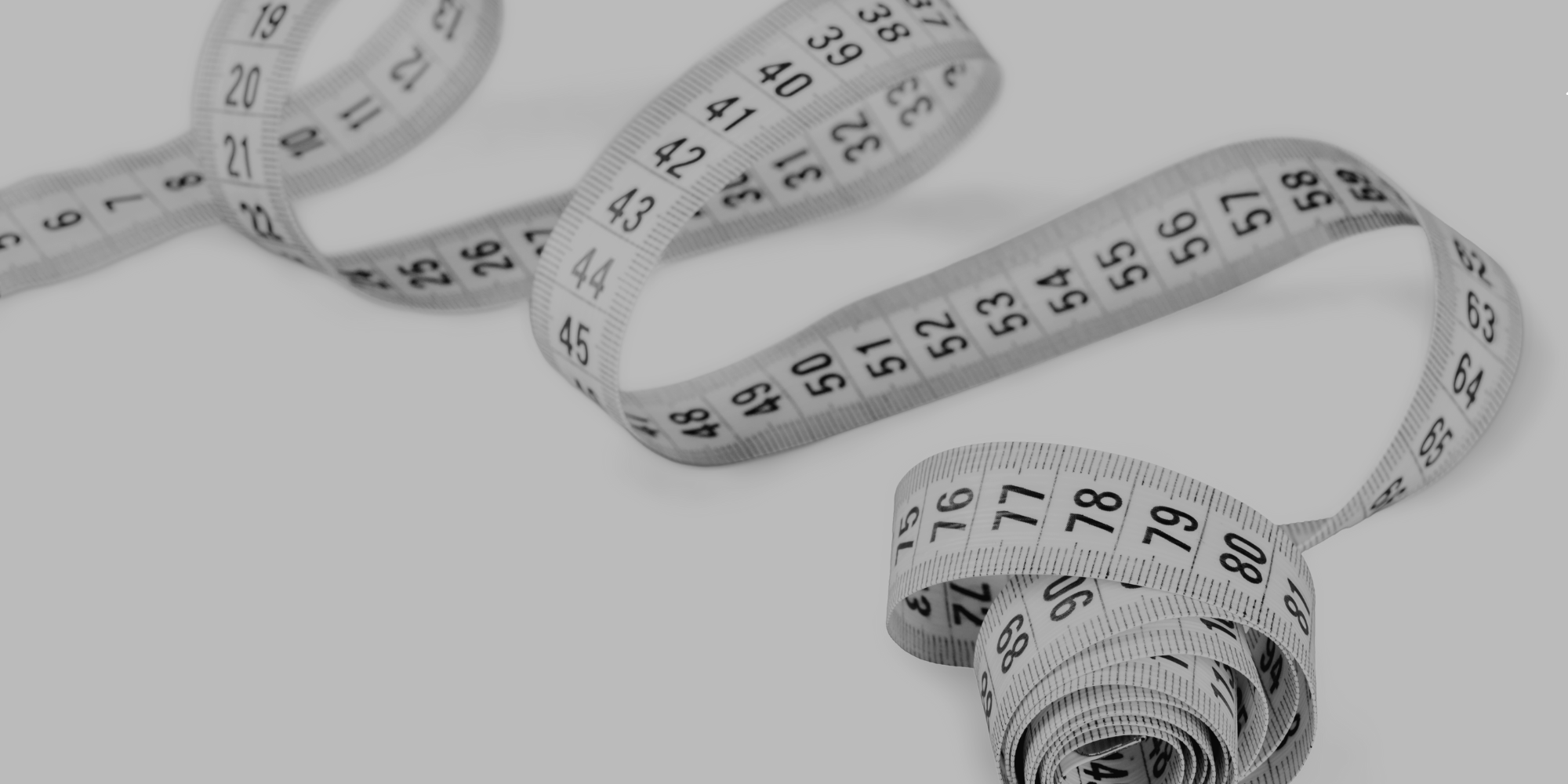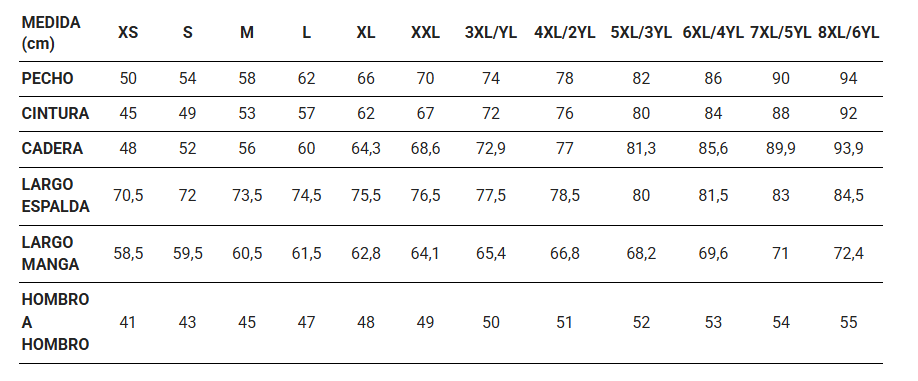
HAVE YOU EVER WONDERED WHAT YOUR SIZE IS IN GARY'S UNIFORMS?
At Uniformes Gary’s, we offer a wide range of sizes that may vary depending on the cut, material, or design of the garment. To help you find your perfect fit, we’ve developed measurement guidelines that, along with each garment’s size chart, will provide you with tools and tips to learn how to measure yourself and choose the size that best fits you.

FREQUENTLY ASKED QUESTIONS
1. What are the most important body measurements to consider?
Chest, waist, hips, and shoulders.
2. What tools are needed to take measurements?
You only need a measuring tape.
3. What type of clothing should be worn when taking measurements? And footwear?
For best accuracy, it's recommended to take measurements without clothing or, if not possible, in tight-fitting clothes. Regarding footwear, it depends on the garment type: for example, to measure the length of trousers, you should wear the shoes that will be used with them.
4. Is it better for someone else to take the measurements or can I do it myself?
It’s advisable for someone else to take the measurements to better measure circumferences with accuracy.
5. Are different measurements relevant depending on the type of garment (shirts, trousers, jackets, etc.)?
Yes, each garment requires specific measurements. A shirt is not measured the same way as a jacket. Measurements may also vary depending on the design.
6. What additional measurements should be taken for fitted or tailored garments (like suits or dresses)?
The same measurements apply, but if the garment is fitted or tailored, it’s important to consider the customer’s preferred fit to ensure it hugs the body just right.
7. For footwear, what specific guidelines should be followed?
It’s best to measure your foot flat on the ground, preferably at the end of the day when the foot is slightly swollen.
8. Are there any exact reference points to use for each measurement?
Yes, each measurement has a specific reference point to ensure accuracy:
- Chest: measured at the fullest part of the chest.
- Waist: measured at the narrowest part of the torso, just above the belly button and below the ribs.
- Hips: measured about 20–22 cm below the waist, at the widest point.
- Shoulder to shoulder: measured from one end of the shoulders to the other.
- Garment length: measured on the back, from the base of the neck downward.
- Sleeve length: measured from the shoulder (with the arm bent at 90º) to the wrist, covering it.
9. Should allowances or ease be added to ensure comfort in certain garments?
Yes, ease is recommended to ensure the garment is comfortable.
10. What posture or position should a person adopt when measuring to ensure the most accurate results?
The person should maintain a natural, upright posture without tensing the body.

TIME TO CHECK THE SIZE CHART
Steps to choose my size:
- Choose the garment of interest
- Take the measurements
- Divide the measurements by 2*
- Check the garment’s Size Guide and select the size that best matches your measurements
*Note! The garment measurements are taken flat and not around the circumference, so you must divide your measurements by two. Always try to leave a bit of ease, as recommended above.
Example with reference 944100 MEN’S CHEF JACKET VIDAL and our measurements are:
|
 |
Looking at the garment’s Size Guide, we see that the size that best matches our measurements is M.








